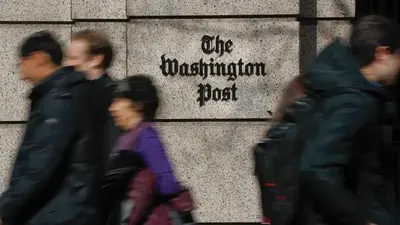Business
Interest rates are at a 22-year high. Here’s what that means for your finances.
The Federal Reserve raised interest rates to a 22-year high this week -- a milestone that carries major implications for the finances of everyday people, experts told ABC News.
The move escalated an aggressive series of rate hikes that has helped dramatically reduce inflation from a peak last summer.
But the historically high interest rates are bad news for borrowers, who will face even higher costs for things like car loans to credit card debt to mortgages.
The high interest rates do deliver benefits for savers, however, who stand to gain from an uptick in the interest yielded by accounts held at banks as well as bonds and high-yield savings accounts.
"It depends what side of the ledger you find yourself on," James Cox, a financial advisor and managing partner of Virginia-based Harris Financial Group, told ABC News.
"If you're a saver and you have money in the bank, this is fantastic," he added. "For people who borrow money, it's way more expensive."
MORE: Fed raises interest rates 0.25%, intensifying inflation fight despite cooling prices
Here's what to know about how the sky-high interest rates affect people's personal finances.
What do historically high interest rates mean for borrowers?
The high interest rates make borrowing more expensive.
So any purchase that requires a loan -- for a home, car, or higher Education -- could be affected. Credit card rates are also highly sensitive to Federal Reserve moves, so card holders should expect even higher payments. As of Wednesday, average credit card interest rates stood at a staggering 20.5%, Bankrate data showed.
"Borrowers are negatively affected," Christine Benz, the director of personal finance at Morningstar. "Higher rates mean higher interest payments on loans."
Mortgages, for instance, show how much more costly borrowing has become.
The 30-year fixed-rate mortgage reached more than 7% in October, achieving heights last seen more than 20 years ago, Freddie Mac data showed. The rate has fallen slightly below 7% but remains highly elevated, Freddie Mac said on Thursday.
At the start of 2022, by comparison, the mortgage rate on a 30-year fixed mortgage stood at 3.22%.
MORE: US economic growth accelerated in 2nd quarter, exceeding expectations and quieting recession fears
For homebuyers, each single percentage point increase in a mortgage rate can add thousands or tens of thousands in additional costs each year, depending on the price of the house, according to Rocket Mortgage.
However, the jump in interest rates comes with a silver lining: The elevated cost of loans should slash demand and cut home prices, Benz said.
"We haven't seen it yet but there might be a chilling effect on home prices," she said, citing a supply shortage that she believes could slacken over time.
What does the elevated interest rate mean for savers?
As much as high interest rates hammer borrowers, they benefit savers.
"If you're a saver right now, it's pretty darn good," Derek Horstmeyer, a finance professor at George Mason University's School of Business, told ABC News.
The yields on savings accounts have climbed as the Federal Reserve has lifted its interest rates, since banks accrue additional revenue in a high-interest rate environment and pass along some of that income to depositors.
Meanwhile, an array of high-yield savings accounts has emerged as firms seek to entice depositors with high returns.
The average annual yield on a savings account has more than doubled since April but still stands at just 0.52%, meaning that a typical customer earns a fraction of a percentage point of interest each year for his or her savings deposit, Bankrate data showed.
MORE: Anheuser-Busch to lay off hundreds of workers after Bud Light boycott hammers sales
High-yield savings accounts, however, offer customers as much as about 5% annual percentage yield, a Bankrate analysis said.
Moreover, the simultaneous presence of high interest rates alongside declining inflation means that savers can avoid the elevated consumer prices that previously ate away at savings, said Cox, of Harris Financial Group.
"It's massively beneficial," Cox said, noting his expectation that inflation will continue to fall. "It only gets better from here."
-

 Business9h ago
Business9h agoIdeas Wanted in Regards to a New Rail Trail in Beacon
-

 Business9h ago
Business9h agoCaitlyn Clark and breaking the glass ceiling for women in all sports – John Cardullo
-

 Business9h ago
Business9h agoIn the news… your quick look at the week ending April 27th
-

 Business15h ago
Business15h agoKen Chenault and Ken Frazier on the Challenge of Polarization Today
-

 Business15h ago
Business15h agoL.L. Bean Store Is About To Open In Kingston, New York
-

 Business22h ago
Business22h agoFire At Lower Hudson Valley Apartment Complex Displaces 50
-

 Business22h ago
Business22h agoWhat Was This Large Vessel Doing in Hudson River?
-

 Business1d ago
Business1d agoMarch 2024 insolvency statistics commentary – Mild on the finish of the tunnel however companies should train warning



























